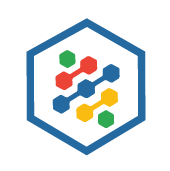
Rethinking Digital Transformation – Britannia Woods Community House
Rethinking Digital Transformation

Britannia Woods Community House opened in 1976 with the purpose of ensuring the families living in the Britannia Woods community had access to social, educational and recreational supports. In the early 1990’s, an Emergency Food Pantry was implemented to provide families with an emergency supply of food. 44 years later BWCH is still serving the community proudly. BWCH is always looking for ways to cost-cut avoidable expenses and increase program budget. BWCH turned to Toos Technical Solutions for a simple and secure Microsoft-based solution to connect their two offices, reduce data risk and gain savings along the way.
Issue
The existing IT environment at Britannia Woods was under utilized, inefficient and did not meet the objectives of the organization. In the last two years Britannia Woods had grown into a two-space operation. That growth did not reflect their IT environment which was causing unproductiveness and higher risk of data loss. This placed an extra burden on staff working hard for our community. Employees rely on their email to accomplish daily productivity tasks and collaboration with other colleagues on files and documents.
When we did an audit of the IT environment, it was apparent that the lack of hardware created counterproductive working environment, the wrong subscriptions limited any value generation from software and training for staff on information management would be beneficial.
Challenge
- The lack of a centralised document management solution in addition to the absence of an effective document management strategy has resulted in their data becoming
unworkable. - Staff were growing increasingly frustrated with the amount of time it was taking to find documents and up to date information about ongoing case files because it was not easily
accessible. - There was a growing reliance upon email for storing and sharing documents between offices and departments.
- The lack of a centralised document management solution caused an increase in duplicate data throughout the organisation.
- The Microsoft Office subcriptions the organization had in place were too costly for a non-profit and did not offer the appropriate applications staff required.
Solution
- Introduce Microsoft SharePoint as a centralised document management solution. This solution would be shared by head office and remote workers, improving collaboration between departments and individuals throughout the organisation.
- Setup SharePoint document libraries in Outlook, allowing staff to copy emails directly into SharePoint Online in addition to using drag and drop.
- Develop a custom search solution using Microsoft FAST search which is Microsoft’s SharePoint collaboration platform used to help users locate and retrieve content stored in
SharePoint. - Introduce Microsoft Azure Multifactor Authentication to SharePoint as an added layer of security and data protection.
- Tag all content with metadata as it is being uploaded to SharePoint, making it far easier to organise and retrieve content.
- Introduce the Deep Data archiving solution to archive the clients redundant data.
- Conduct SharePoint training workshops for staff onsite and via video conferencing for remote workers.
The Outcome
- Productivity and profitability has increased thanks to an effective document organisation strategy that is driven by SharePoint Online.
- SharePoint Online is now the single centralised document management repository that provides all the functionality the company requires for efficient client and case records management.
- Client data management has been streamlined through the introduction of SharePoint Online increasing business case efficiency and improving productivity, customer service and client relations.
- All electronic email correspondence is now saved in SharePoint alongside the respective case files and customer information.
- The staff are now collaborating more effectively on cases and sharing knowledge from the same repository.
- The introduction of FAST search capability has made it quick and easy for their staff to find up to date information.
- As an added layer of security, document version tracking is active and access permissions have been applied at both user and group level, ensuring that all staff only have access to their respective client case details.
- Any duplicate data has been completely erased from the client’s network, speeding up productivity and reducing the workload placed on their internal file server and exchange servers.

